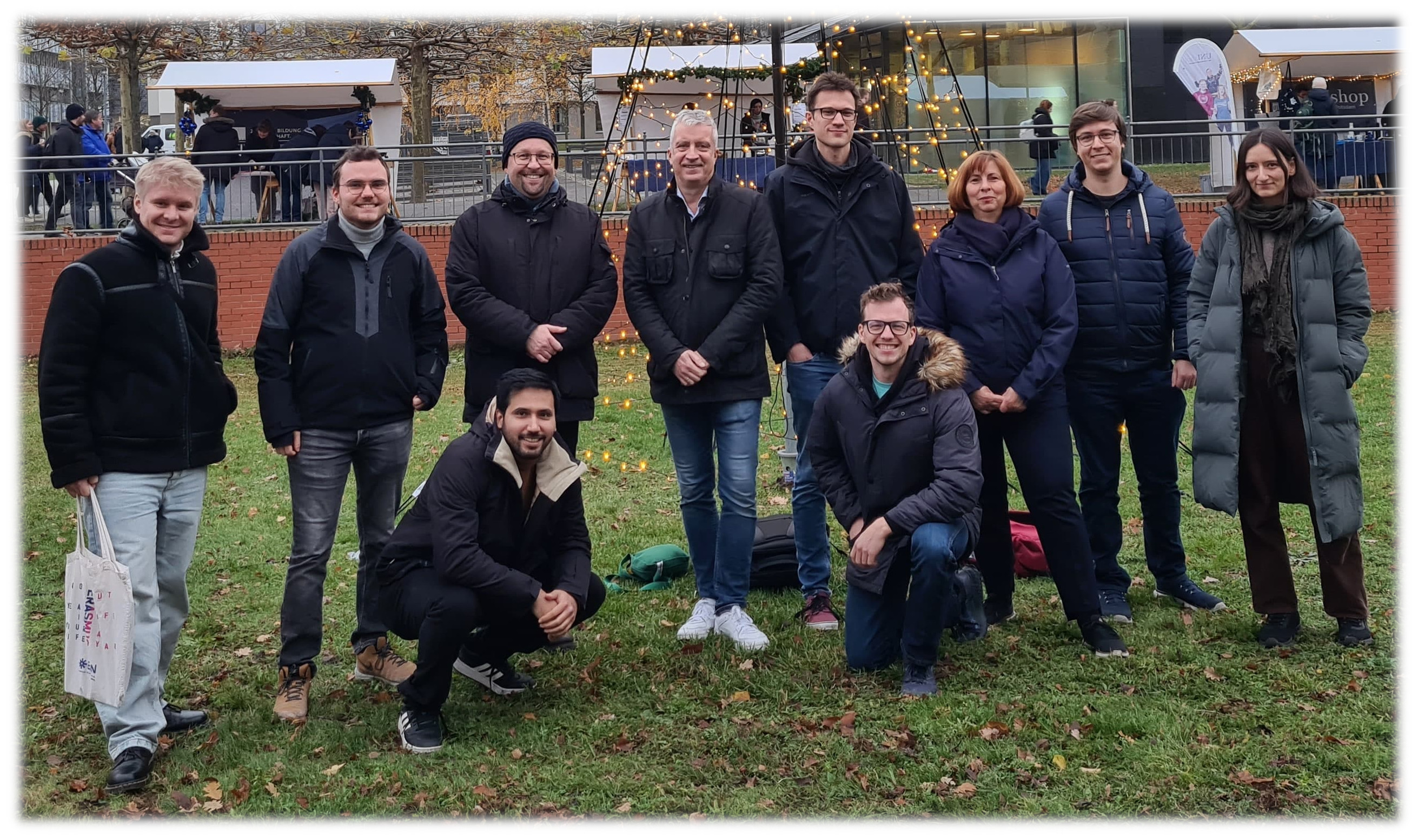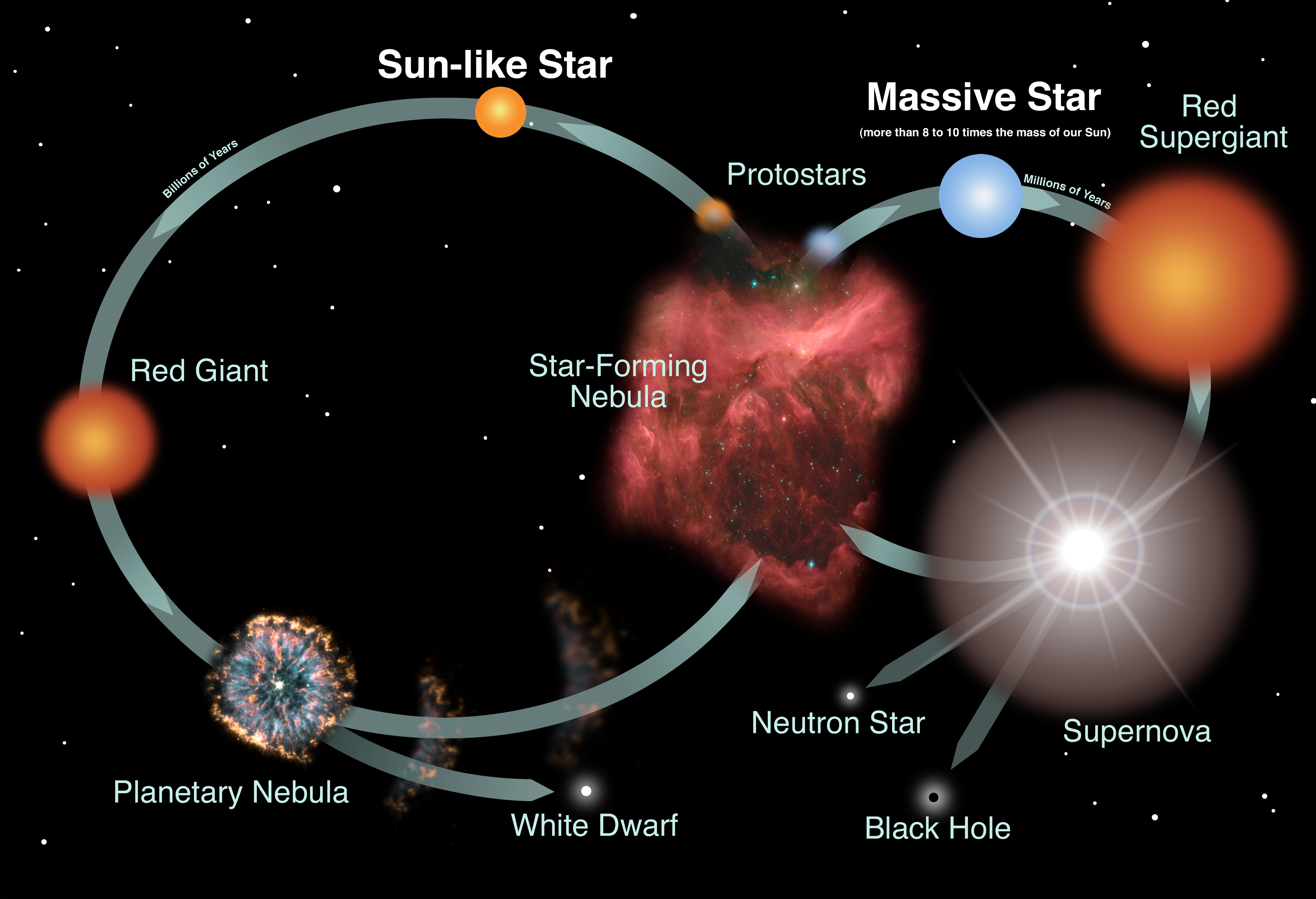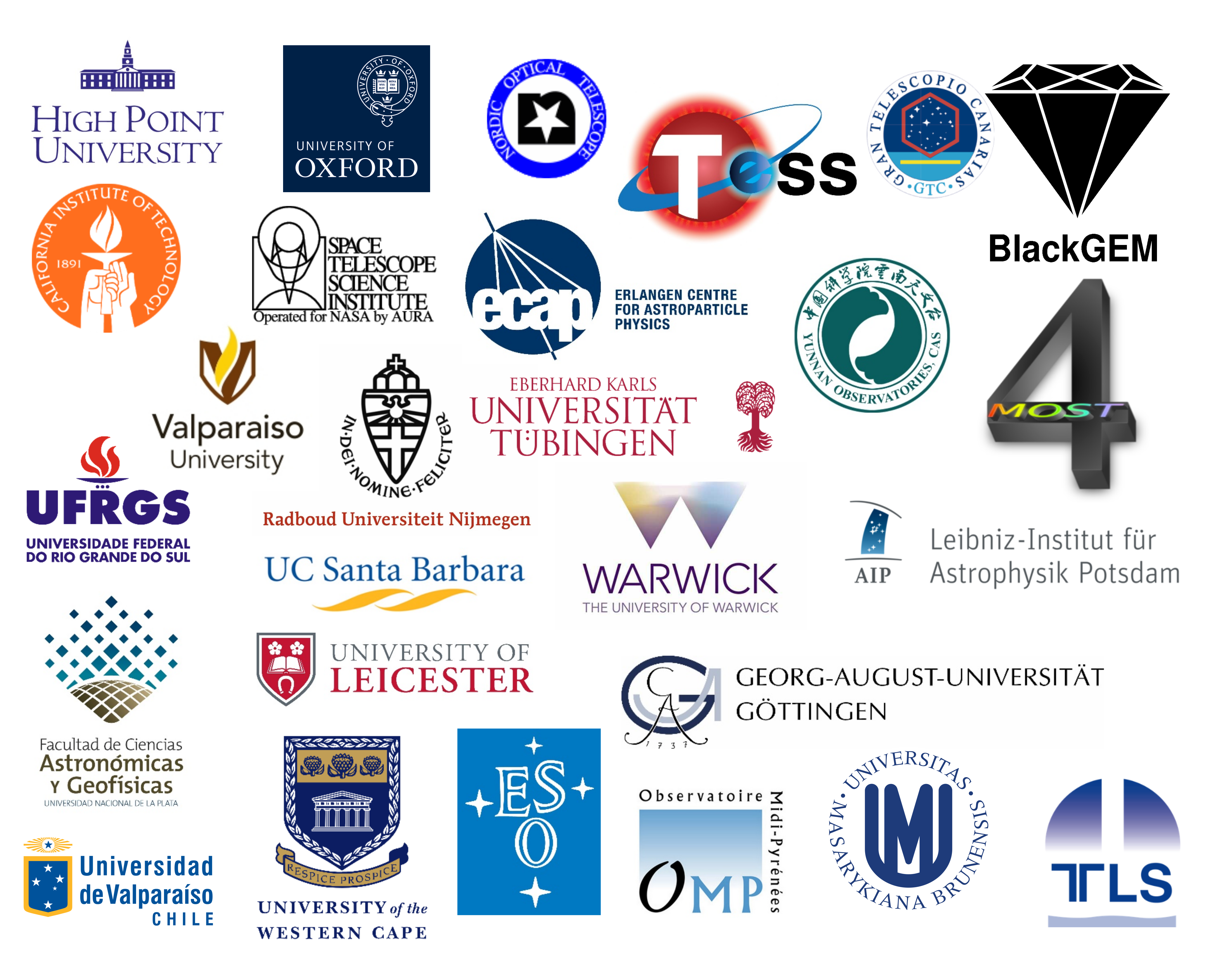Stellar Astrophysics in Potsdam
The Stellar Astrophysics Group was founded in April 2018 as part of the Institute for Physics and Astronomy of the University of Potsdam and
is located at the Campus Golm.
Astrophysics in Potsdam is quite diverse. The University of Potsdam
and her partner institutions offer a broad spectrum in teaching and
science along with an international master's program. We have students and scientists from around the world working together in our group.

The stellar astropysics group in Potsdam in 2024 (2022, 2021, 2019).
The late stages of stellar evolution
Stars live a long and rather peaceful life. But after a few billion years it finally comes to an end. Our group works on those late stages of stellar evolution, which can become pretty turbulent. Towards the end of their lifetime, stars like our Sun expand to become red giants.

Life cycle of stars.
Image credit: NASA and Night Sky Network.
In this phase they might come close to their neighbours and transfer mass. This happens more often than one might assume, because stars are usually not alone, but instead have one or even more companions. Also planets or their more massive cousins, the brown dwarfs, orbit most stars. In the giant phase they might be swallowed by their host stars. Whether they can survive that and maybe even influence the further evolution of the host stars remain unclear at the moment. After the giant phase the stars shrink to become about Earth-size white dwarfs. At first they become very hot as subdwarfs and can eject their envelopes as planetary nebula. Very close binaries with orbital periods of hours might even merge in this phase and explode as supernovae. Explosions of white dwarfs in close binaries can accelerate the surviving companions to extreme velocities. Such hypervelocity stars can even be kicked out of our Galaxy.

Our research focuses on the final stages of stellar evolution, hot subdwarfs, red giants, (extremely low mass) white dwarfs, central stars of planetary nebulae, close binary systems, supernova Ia progenitors, runaway and hypervelocity stars, and the interaction between stars and substellar objects like brown dwarfs and planets. Our collaborators are distributed over five continents and we are actively involved in various ground and space-based missions such as TESS, 4MOST, and BlackGEM.

Partners and collaborations